State of Change Examines Invasive Species
Table of Contents
- Early scientists catch the invasive birds
- Cicadas, Mosquitoes, Spotted Butterflies and increasing insects
- Illinoisans are coping with and cooking up Copi (AKA Asian carp)
- Armadillos aren’t just in Texas anymore
- How to stop invasive plants from taking over the prairie state
- Why boaters are crucial to stopping the spread of Zebra Mussels

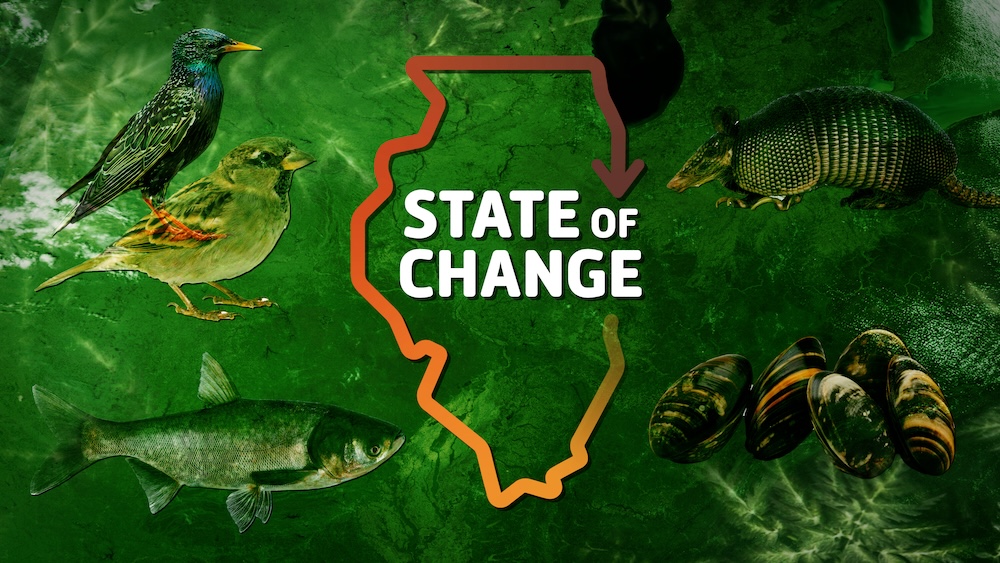
Because of a combination of factors, including a warmer climate, invasive species are on the rise here in Illinois. This year’s State of Change — Illinois Public Media’s annual environmental special hosted by Tinisha Spain — will focus on aquatic creatures, birds, insects, and plants that are invasive. Illinois scientists explain how they monitor and, in some cases, mitigate non-native species. Additionally, the program will show viewers how they can help limit the growth of these species.
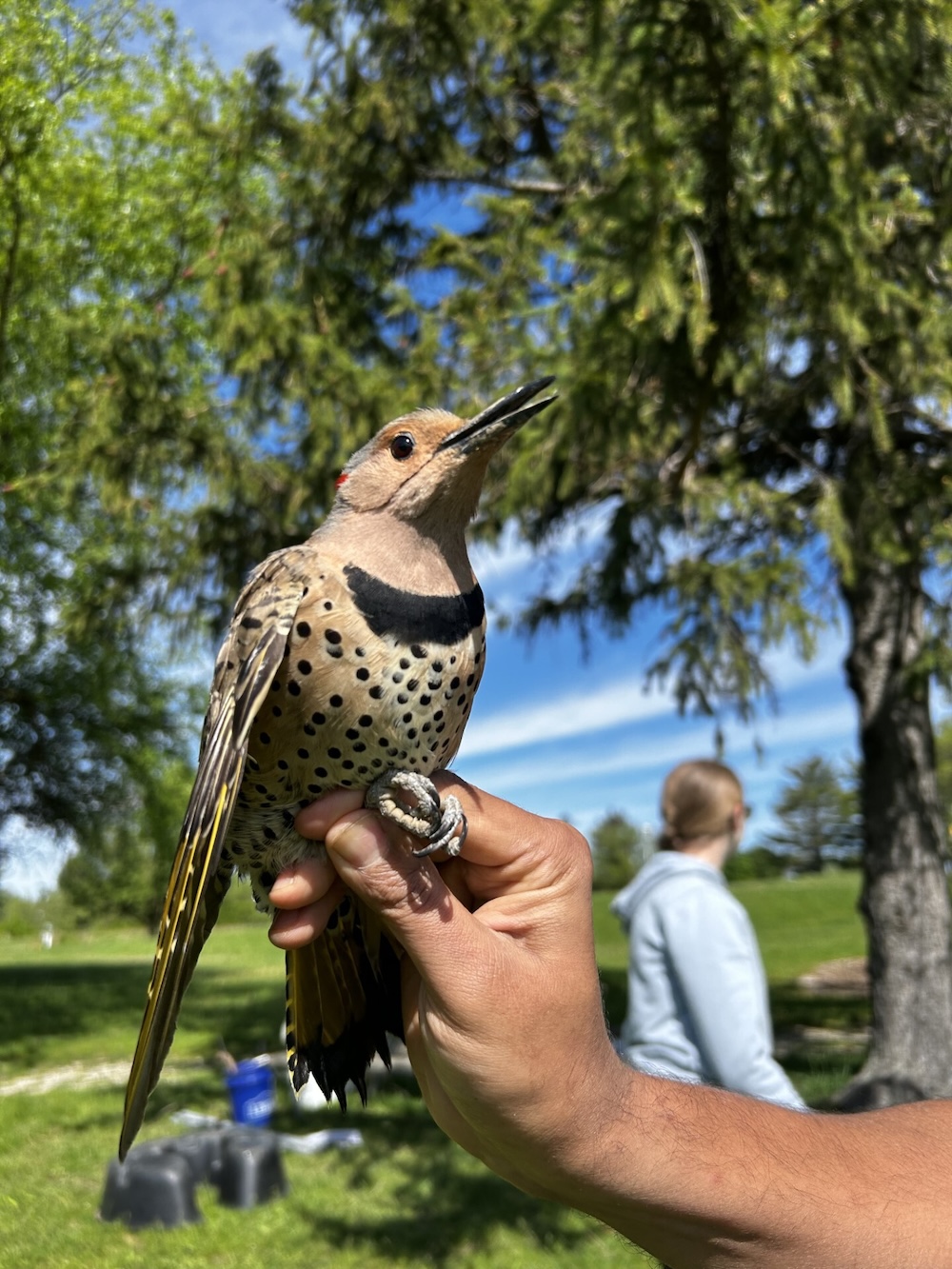 - We’re following researchers who catch and categorize migrating birds that are killing native Illinois birds and eating crops.
- We’re following researchers who catch and categorize migrating birds that are killing native Illinois birds and eating crops.
- We wade into Illinois rivers to study the mussel species that appeared in 1988 in the US and now have infiltrated Illinois waterways.
- We explain how to spot invasive species of plant, how they got here and why you’re encouraged to destroy them.
This year also covers the nine-banded armadillo. A mammal usually associated with the southern US and central and south America has expanded its territory into half of Illinois. Tinisha will show the extensive process researchers undertake to observe these mysterious animals.
This episode is the fourth edition of Illinois Public Media’s award-winning environmental series, State of Change. The half-hour special airs at 7:30 pm Thursday, Nov. 14 on WILL-TV.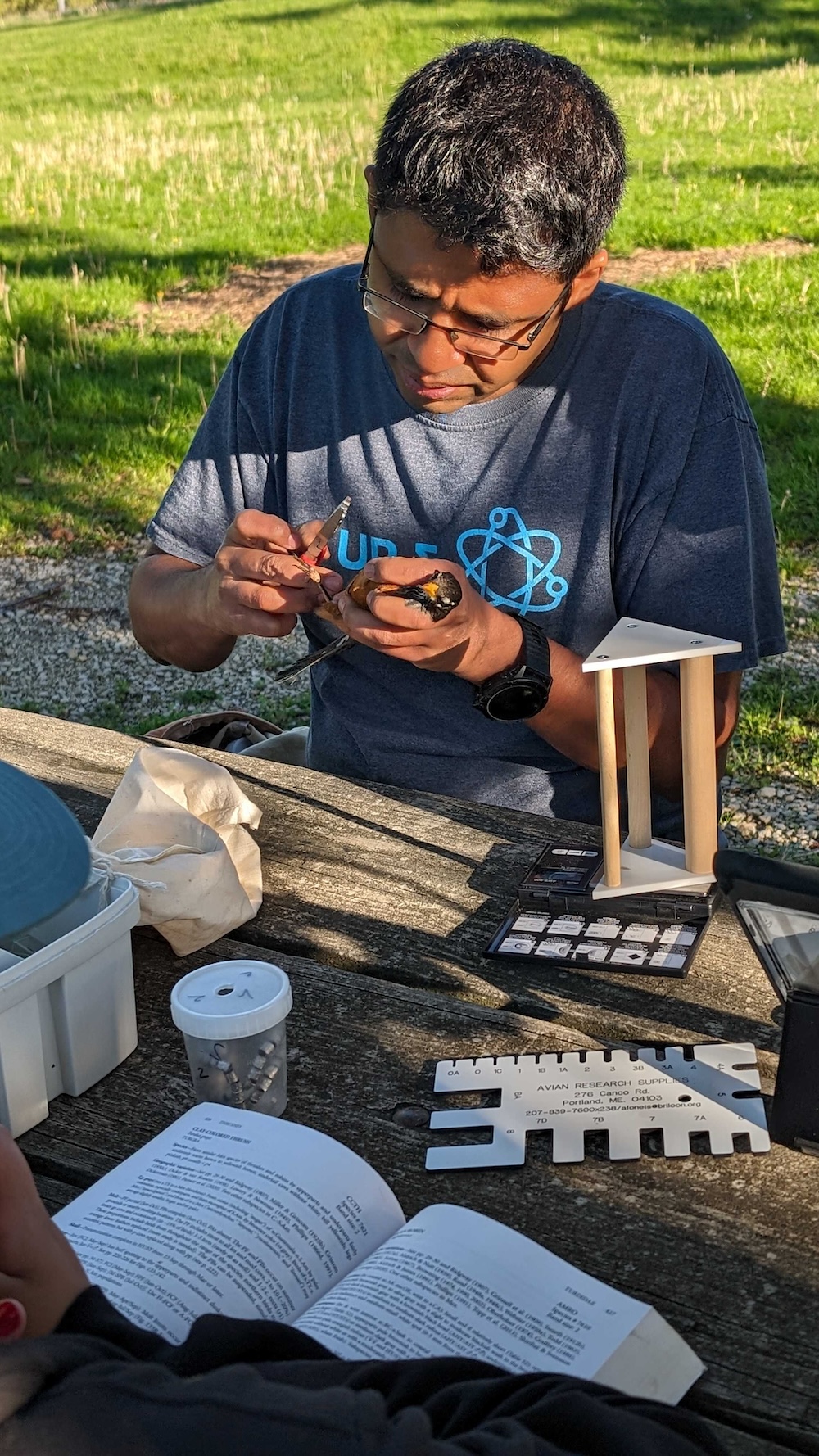
In 2024, State of Change was honored with a regional Edward R. Murrow Award for Excellence in Diversity, Equity and Inclusion for the program’s 2023 special. It was also recognized nationally for the third year in a row with a Public Media Journalists Association award.
Funds to produce ‘State of Change’ are generously provided by the Backlund Community Trust.
Early scientists catch the invasive birds
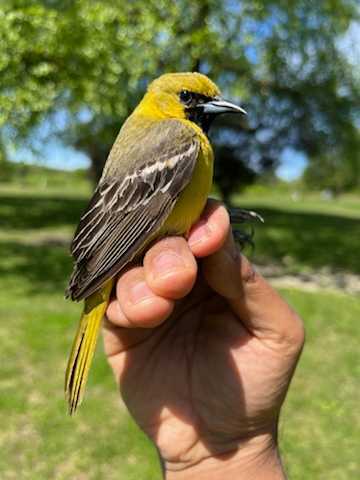 American Goldfinch caught in Peoria. (Tinisha Spain/IPM News)
American Goldfinch caught in Peoria. (Tinisha Spain/IPM News)
Illinois is home to hundreds of species of birds. Depending on the season, you can step outside and hear the familiar call of many songbirds right in your own neighborhood. But, not all of these birds should be in Central Illinois. Our warming climate is changing the face and temperature of the prairie land. It's locking native birds into a fierce competition for resources with invasive species.
Invasive birds cost the United States' farming industry billions of dollars every year. But to find out which species are the biggest culprit, you have to get up way before the sun comes up.
At four in the morning on the campus of Bradley University in Peoria, Professor Anant Deshwall and his students are up early in the name of science. Anant is a conservation biologist, community ecologist and ethno-ornithologist. His team loads up a van with ice, instruments, poles, and nets before driving to a local park.
It's a race to set up three nets to catch the migrating songbirds before the sunrises. Songbirds cannot see the nets and will fly right into them.
Before the last net is set up, a robin is heard squawking after it is caught. It goes safely into a bag for studying.
“Oh, we got a Starling! We got a Starling, our first invasive species," said Deshwall, minutes later.
Each bird is carefully untangled from the nets so they are not injured. The birds are placed upside down in soft cloth bags for at least a half hour so the scientists can collect a fecal sample to study their diet and overall health.
Later, the beak, wingspan, and legs of a European Starling are measured and recorded. Starlings are one of the most invasive species in our state. Anant says a fan of William Shakespeare released dozens of the birds in New York’s Central Park before the Civil War.
"[In the] 1860’s there was a fan of Shakespeare, who released starlings and about 60. We have at least a few million starlings in Central Illinois right now," said Deshwall.
The starlings reproduce quickly and don’t have any natural predators in Illinois. And they aren’t the only encroaching birds he’s researching.
“It’s a house sparrow. You can tell it’s a male because it has black on its chest. It's an invasive species," said Deshwall.
Sparrows were introduced to eat caterpillars that were destroying elm trees in the northeast, and now there are hundreds of millions of them. They’re known for destroying crops and other songbirds.
"It will go over in agriculture fields and eat the seeds there. Corn it will eat it. Any seeds we are growing, it will eat those," said Deshwall. “They will drive bluebirds, the native birds, out of their nests. Sometimes even kill them! Or kill their offspring, clean up the nest, and bring their own nest in there.”
Another factor making the non-native birds feel welcome in our state is climate change, fueled by our dependence on fossil fuels. According to the Illinois State Climatologist, Illinois is one to two degrees warmer than it was 100 years ago. Birds normally only found in southern states can now survive a Midwest winter.
"They are not only affecting our crops and all, they are also causing the number of our native species to decline on top of climate change. And we are partially helping them. How are we doing that? By accelerating climate change," said Deshwall.
Deshwall said doing things like hanging bird boxes, built for native birds like bluebirds will help native bird numbers rise. Gardening is another way.
"Plant more natives in your gardens. Plant more native plants. Plant more vining flowers that will attract more native insects and birds," said Deshwall.
Before their release, a leg band with a unique number is put on each bird’s leg so they won’t be counted more than once if they catch it in the future. Then these winged wonders were free and headed off to their next destination.
Cicadas, Mosquitoes, Spotted Butterflies and increasing insects

Insects tell us a lot about the local ecosystems. And 2024 was the year of the cicada.
After feeding underground for 13 to 17 years, two different broods emerged at the same time in parts of Illinois. Depending on where you were in Illinois during the spring of 2024, you heard the mating call of the male cicada for weeks. In Chicagoland, neighborhoods were swarmed.
A few people in Thatcher Woods in Maywood didn’t seem to mind them too much and accepted the loud, winged visitors for what they were… a once in a lifetime experience.
"I brought my own ear plugs today just in case I wasn't going to like the level of noise," said Nate Seeskin of Chicago.
"I really like nature so they don't bother me. And if you look at them closely, they're really lovely," said Judy Grace of Oak Park.
The next time Illinois will see an emergence like this will be in more than 200 years!
Chris Dietrich is the Illinois State Entomologist. He says climate change could affect future broods by cueing them to emerge too early which disrupts the emergence schedule of other broods.
"There is some concern about these cicadas because they are pretty restricted to particular kinds of habitat and the effects of climate on those habitats are still kind of unknown," said Dietrich.
Invasive insects are growing in both numbers and species, in Illinois.
"Well, the, one of the big ones is the Asian Tiger Mosquito. That one has been here for a while now. It's of course, a vector of West Nile Virus and potential vector for some other rather serious diseases of humans and livestock and wildlife," said Dietrich.
West Nile Virus is serious because one bite can cause inflammation of the brain or death. Although most reactions only result in a fever or rash. Some cities have had to use chemical control to protect people from getting bit.
"Aedes Aegypti, which is the malarial mosquito, which already occurs on the gulf coast of the US," said Dietrich.
Another concern is the spotted lantern fly. The invasive insect is wreaking havoc on vineyards on the East Coast. The first Illinois sighting was in Chicago in 2023.
Illinois is home to more than 100,000 different species of insects and that’s a good thing. Each tiny insect has a role in maintaining our local ecosystem. An ecosystem that is changing due to the hot and dry summers and mild winters.
"When you consider the insect community as a whole. It's very complex. It includes predators and parasites and things that feed on plants, things that feed on fungi, all of those are gonna have slightly different responses," said Dietrich.
While invasive insects are increasing, native species are decreasing. The prairie state is actually less than one percent prairie land, which means less habitat and food for native insects specifically suited for the grasslands.
"So we're setting ourselves up to fail in some cases by eliminating all the natural habitats that have all these natural enemies and complex community interactions between different species and these artificial human produced environments that just have a couple or even a single species," said Dietrich.
And if the insect population takes a hit, other plants, crops and animals in Illinois will also be at risk.
"A lot of the research that's been done on this has been done by ornithologists, not entomologists, because they're concerned because the birds don't have enough to eat," said Dietrich.
Illinoisans are coping with and cooking up Copi (AKA Asian carp)
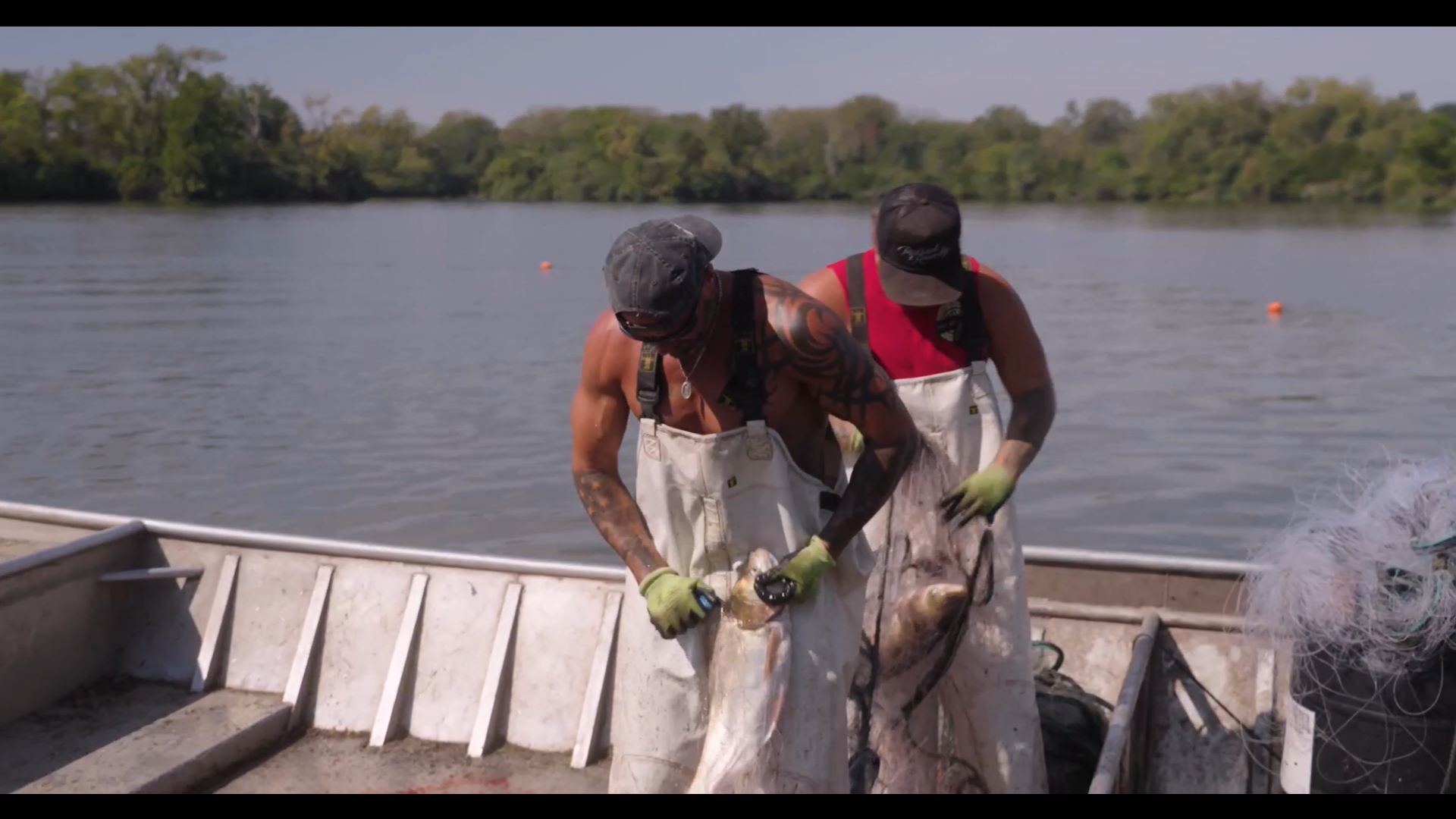
Illinois has 88,000 miles of rivers and streams inside and along its borders. Many are packed with Copi, also known as Asian Carp. We checked on efforts to eliminate this invasive fish. Here's a transcription of the story:
Brian Schoenung, Aquatic Nuisance Species Program Manager, Illinois Dept. of Natural Resources:
These fish have really exploded onto the landscape in the last, say, 20 plus years. We've been in sort of reaction mode for quite some time trying to catch up. There's a whole host of programs just on the Illinois River. We've got detection and monitoring efforts to get a better understanding of where these fish are, where they're moving, and how we can effectively control their populations.
Today, we worked with our contract fishing crews. They'll drive those fish into the net. So what you see is a lot of banging, a lot of motor revving. The objective is to try and drive the fish into the nets. You can see that they are prone to jump. They're prone to be herded. So what we do is our contract fishers will come in and they're circle a school with a gill net. And then they've got to actually chase those fish into the gill net, and that way we can, get them caught and tangled up in there, and then we can remove them. These fish are primarily filter feeders, and they're feeding on phytoplankton, zooplankton, and we've got a few native species that also utilize that resource, like gizzard shed and Buffalo and things like that.
Their jumping behavior is a threat to boaters. If you're boating or fishing or, you know, recreational water skiing, whatever you've got to deal with this new threat that didn't historically exist. To the extent that climate change is is causing these increased rain events within the basin, we're going to see significant impacts of these fish moving into new areas, taking advantage of those open water conditions and increased opportunities for spawning and reproduction.
Justin Widloe, Field Lead for the Aquatic Nuisance Species Program, Illinois Dept. of Natural Resources:
So today was a day of contracted commercial removal. We also call it the harvest program. So we went out with five of our contracted commercial fishers in a place called Sheehan Island. Our guys got loaded down and probably caught 5,000-10,000 pounds, that's pretty decent dip. So usually a really good day is like 15-20,000 pounds.
Allie Lenaerts, Natural Resources Coordinator for the Aquatic Nuisance Species Program, Illinois Dept. of Natural Resources:
The harvest program usually starts in about February or March and goes until December. So we're usually out with a commercial fisherman. So a biologist will be on the boat to make sure we're recording data and recording fish counts, and then at the end of the day, we do total weights.
Brian Schoenung, Aquatic Nuisance Species Program Manager, Illinois Dept. of Natural Resources:
Within our different harvest programs up here in this upper portion of the river, we're removing in excess of one million pounds of fish in any given year. I think last year, we did about 1.7 million pounds further down river, where we have commercial fishing that's incentivized. We started out at about two or 3 million pounds. The last couple of years, we're almost up to 10 million pounds.
Charlie Gilpin, Jr., Commercial Fisherman for the State of Illinois:
We're here four days a week. We're here start as soon as the ice goes off in the conditions the colder weather is more productive. The fish are slower, because they're very fast and they're they're in schools a lot tighter, and we catch a lot more in the colder months as the summer months.
Dirk Fucik, owner, Dirk's Fish in Chicago
We get people [that] come and get it on a fairly regular basis, but [I am] not making a living selling Asian carp. Copi is a new name. It's a new name for an old fish. So it's actually Asian carp. So these guys come as a whole fish. You skin them, you bone them, but they have so many bones we have to grind in the grinder. And in the grinder it ends up looking like this. So this is basically just like a ground burger meat, ground chicken, whatever you can take and make all kinds of things.So, so it's an invasive species here in Illinois, and we've been trying for years to get people to, you know, try it, and we come up with different ways to cook it.
Transcribed by https://otter.ai
Armadillos aren’t just in Texas anymore
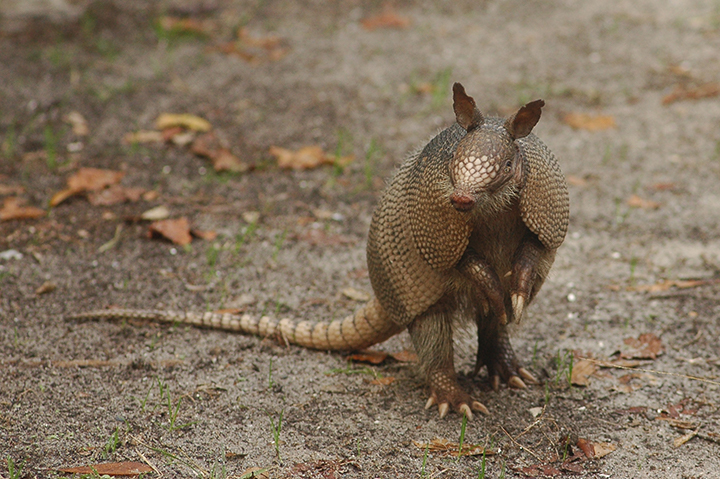 (National Park Service)
(National Park Service)
When you think of armadillos, you may associate them with Texas. But scientists tell us they have found a permanent home in Illinois.
On farmland near Carbondale, F. Agustin Jimenèz walks past acres of soybeans into a wooded area. Jimenèz is a Zoology professor at Southern Illinois University. He’s setting up camera traps to catch images of an elusive animal coming in and out of a burrow.
Around two in the morning, a nine-banded armadillo shows up, headed out for an overnight meal. Jimenèz described the mamals.
“They’re kind of like armored raccoons. These organisms basically have a compact body. Their nose is very elongated, so their snout is very pointy. And they have ears that to some people resemble those of rabbits," said Jimenèz.
Weighing up to 17 pounds, with short legs, long claws and a big tail, the armadillo is mostly a nocturnal animal. It spends the night digging for insects to eat.
The armadillos’ roots are South and Central America. For centuries, they’ve expanded territory north. They are the state mammal in Texas.
According to the Illinois Department of Natural Resources, the animals were first spotted in southern Illinois in 1970. As of 2024, they are found in nearly half of our state, as far north as Sangamon County.
Jimenèz said part of the reason for the armadillo expanding its terroritory is human transformation of the Mississippi River.
“And then with that basic basically, there is kind of, like more habitat that is usable for land animals in that also that allow the clearing of vast patches of forest that actually were used for agricultural purposes and then that established, kind of like the these fragmented habitats with sporadic ponds that the armadillos like," said Jimenèz.
Armadillos have little hair and cannot survive on ground that is frozen for more than a few days. But climate change means winter in much of Illinois is becoming more bearable.
“The warmer winters that suddenly become shorter and shorter… we believe that might’ve presented these animals with an opportunity to survive. This is a working hypothesis that we have," said Jimenèz.
The day of our interview, Carbondale wildlife controller David Easton opened up the back of his truck and pulled out a cage. Inside was what he estimated to be a year old armadillo weighing ten to 12 pounds.
“It's number 16 that I've caught since the spring on my place alone, because they're doing a lot of damage to my grass and my trees," said Easton.
The creatures are not protected by the Illinois Wildlife Code and can be removed without a permit.
In Southern Illinois, you’re likely to pass by armadillos as roadkill. That’s partly because of poor vision and how they respond to noises, like vehicles when they cross the road.
“When they’re spooked, they jump straight up. Well, if you straddle them in a car and they come straight up and damage themselves in your under carriage, they’re many times not salvageable anyway," said Beverly Shoftstal, founder of Free Again Wildlife Rehab in Carterville.
She cares for hundreds of injured wild animals. In recent years, she’s seen an increase in armadillos, which are a challenge to rehome.
“We try to take them back to an area they came from. They are pretty nomadic. It’s not like they’ve got territory that they defend," said Shoftstal.
Armadillos are also the only mammals besides humans that carry leprosy, a disease that causes nerve damage. But according to Jimenèz, there’s not much cause for concern for armadillos in Illinois because they haven’t been exposed to the disease.
“So the animals that are making it here are the ones that are free of infection. Since nobody is infected in about 300 miles around, the animals are in a clean environment," said Jimenèz.
Jimenèz said armadillos are a challenge to document.
“They are relatively difficult to follow, difficult to handle. And then we cannot get with large sample sizes, because they also have differences. They have different behaviors, different habits, and then they kind of like are unpredictable in a way that is not consistent with their small brain," said Jimenèz.
Armadillos are not the only new animals making a home in our state.“Even in Southern Illinois, we have black vultures, we have ticks, we have geckos and organisms that, in some cases, are just expanding their their habitat," said Jimenèz.
How to stop invasive plants from taking over the prairie state
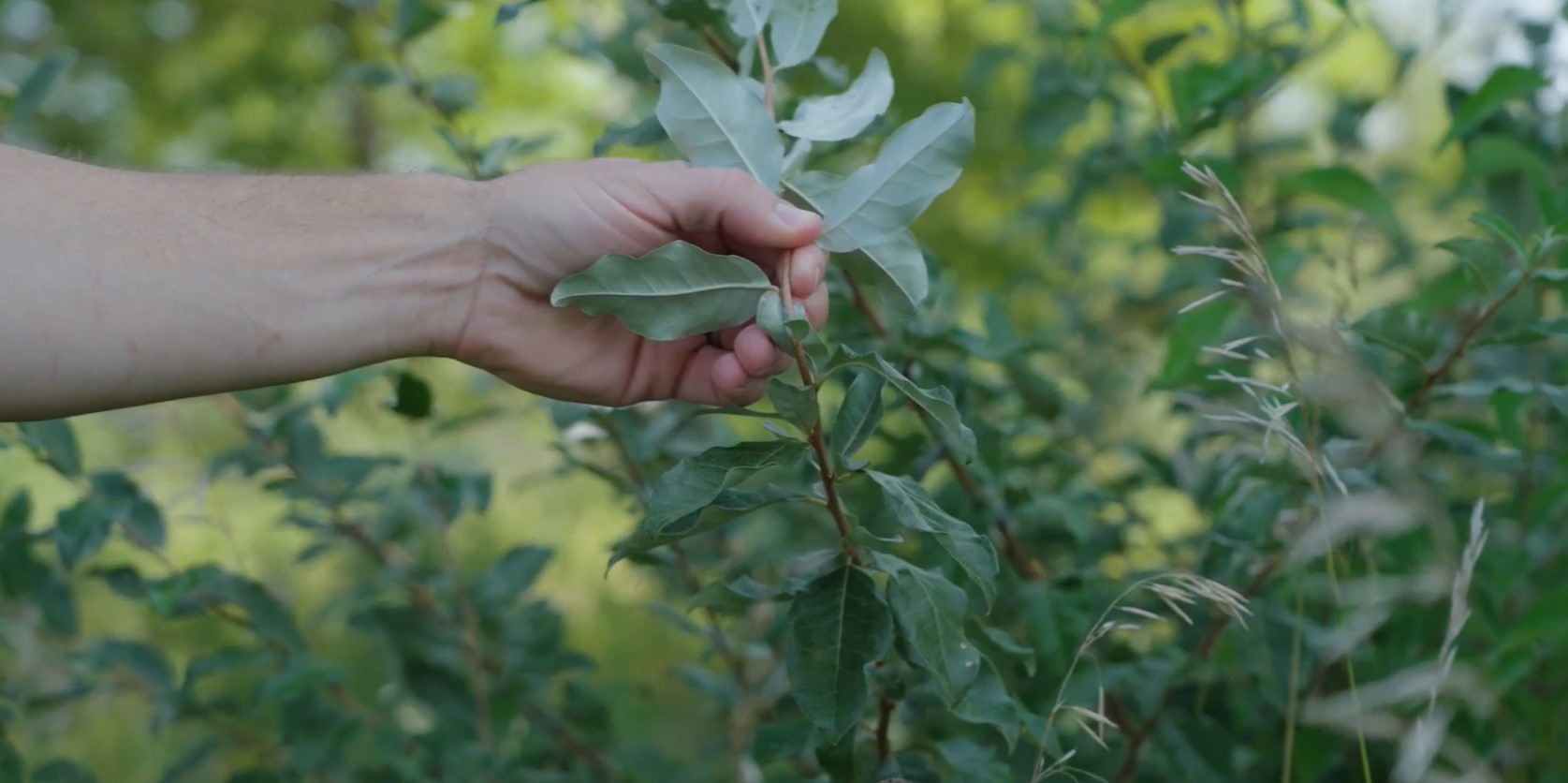
Illinois is called the prairie state because a few centuries ago, it was mostly prairie land, filled with thousands with different types of plants. Now, those native plants are locked into a competition with invasives.
Ryan Pankau is the Horticulture Educator for Illinois Extension. The forester said honeysuckle is the biggest plant threat to native plant diversity in Illinois.
"It was introduced in the 1800s as kind of an ornamental species in general. But there's a big push after the Dust Bowl when we start to look at ways to control erosion, and what are some good wildlife species to actually plant, honeysuckle and autumn olive as well," said Pankau.
Today those same plants are choking out native plants across the state by developing leaves earlier in the spring that blocks the sunlight that native seedlings need to grow. Illinois Extension Horticulture Educator Ryan Pankau said the invasive plant autumn olive has shimmery red berries in the summer. (Sam Mirpoorian/IPM News)
According to the Environmental Protection Agency, Illinois has become warmer and it’s creating a longer growing season that seems to be good for honeysuckle to thrive. Also, birds eat the berries, and in turn, spread the seeds during defecation, planting even more.
"It's really a threat in prairie restorations, in unmowed areas, like ditches and other things, where one of these little berries can land from a bird and start to grow. So it out competes our native plants," said Pankau.
Honeysuckle has striped bark and a distinct leaf pattern.
"So you can see these leaves come out opposite of each other, right across from each other in the branch. It has really arching stems. And you can kind of see that on some of these, some of these stems coming out of here, they really arch," described Pankau while walking in a Champaign County park.
Pankau said you can spot another invasive plant, Autumn olive in your own back yard. In the summer, look for the shimmery red berries.
In Spring, It will be one of the first plants to green up outside.
"It has a really silvery underside to its leaf. And so especially when you look at a plant in full sun, from a distance, you can really see all these kind of undersides of the leaves showing and creating a silvery look," said Pankau.
In smaller areas or backyards, Pankau said hand pulling is a great way to maintain control.
"I probably want to get close to the ground, so I don't snap this upper stem and just kind of try and pull as close to the ground as I can, and you can just take up the whole thing," said Pankau.
But In larger places like parks and natural areas, heavy machinery or a large control burn are the only ways to take back the forest floor. And even after clearing a large site like this, Pankau said you expect can new sprouts to grow from old tree roots, or newly planted berries.
"And so that's just that's another thing that I've talked to a lot of folks about with invasive control, is once you start to enter this if you don't continue to keep the pressure on, to keep the control going, you lose everything you've gained, sometimes in a season or two," said Pankau.
Stay the course and you’ll start to see an increase in plant diversity.
"The more diverse plant life we have, really, there's a direct relationship to the more diverse of wildlife we can support. So, safe to say, the lower the plant diversity, the lower the diversity of birds, mammals, soil, microfauna, and everything in the ecosystem. So we limit the ability of that ecosystem to support more life," said Pankau.
Why boaters are crucial to stopping the spread of Zebra Mussels
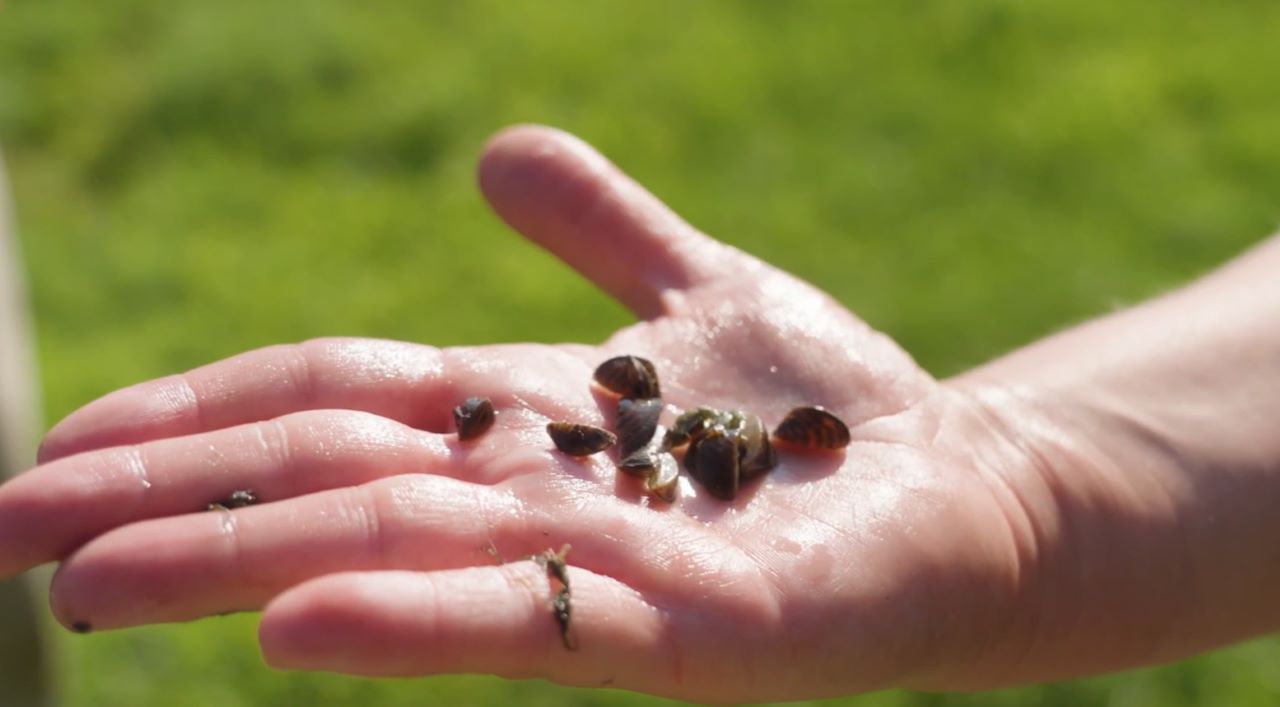
Less than 40 years ago, a European ship contaminated a North American waterway with zebra mussels. They’re easily transported from place to place. But you can help stop the spread. Here is a transcript of our story on State of Change 2024:
Patrick Menke, Bradley University Affiliate Instructor: So I'm going to show you how we collect some of our zebra mussels. We often just go here where the water is still pretty shallow, so less than a meter deep or so. We wear waders and just go slowly in. We always carry this cooler that we fill with water from this collection site. So while we're collecting them, they can go back into the water, and it just kind of floats along there with us, and then we always wear these pretty heavy duty like rubbery gloves. The shells of a zebra mussel are very sharp and can cut your skin if you're not careful.
Jennifer Jost, Bradley University Associate Professor of Biology: Zebra Mussels initially were native to Asia, and then they actually invaded Europe a very long time ago. And then in the late 80s, early 90s, they were introduced to the US, actually to North America. First, they came in through the Gulf of St Lawrence, and data suggest and most invasive species that are aquatic move by this mechanism that they were in the water that is stored in the bottom of boats. When the boat gets to a new area, it has to discharge the water, and larvae of the species are then discharged into that new site.Zebra mussels attached to a watercraft. (Sam Mirpoorian/IPM News)
Patrick Menke, Bradley University Affiliate Instructor: Zebra mussels are considered invasive for a few different reasons. They don't have any natural predators. They don't really have a natural control that's slowing their population. They do have that really high reproductive rate. Female muscles, releasing upwards of a million eggs with no natural predators, really sets them up for being able to kind of spread and take over an area. They attach in these pretty great densities.
Jennifer Jost, Bradley University Associate Professor of Biology: Zebra mussels in the United States are actually pretty widespread at this point. They are widespread throughout all of the Great Lakes region, the Illinois River, the Mississippi River, and a lot of the adjoining tributaries. I know for a fact they've also become quite widespread south of here, in places like Arkansas and Texas.
Patrick Menke, Bradley University Affiliate Instructor: Biggest way that zebra mussels impact our local ecosystem is one just competition for similar food resources to our native mussels. They can become so dense as just like a sheet of mussels, where you're pulling whole sheets off at a time, this one isn't a hugely infested rock, so I can pull off a few at a time, or sometimes you'll crush the shell. So they directly compete with them for food, but they can also directly harm them, just by existing on their shells.
Jennifer Jost, Bradley University Associate Professor of Biology: Most of what is being done is targeting the adults [zebra mussels] to prevent their survival, so that they don't continue to reproduce. And so a lot of the most common methods are things like hot water sprays. So let's say a boat comes out of the water and it has zebra mussels on it, it would be a common practice to hose and spray that boat down with almost steaming hot water to try to remove any of the encrusted mussels.
Patrick Menke, Bradley University Affiliate Instructor: A lot of the current control methods on zebra mussels are trying to eradicate whole populations. A lot of our current research is looking at how to stop that over land travel from like boaters moving to an isolated or uninfested body of water. Think the best thing for boat owners to do is one just learn out how to identify it. Also, just informing other boaters and just letting them know about it. I think just word of mouth and just spreading the word about them will help a lot. And then if you do see them just learning how to properly, like dispose of them and not bringing them with you.
Transcribed by https://otter.ai
